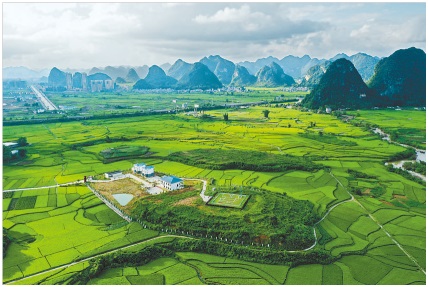By Liu Yi, People’s Daily
China’s ground-based meteorological observations became fully automated as the 2,423 state-level meteorological observation stations across the country finished setting parameters on relevant business software, transmitted data and stored information in the database on March 31.
In the past, the first thing that meteorological observers learned after getting into the career was that they need to go to the observation field to get and report relevant data immediately when observation time comes, no matter the weather.
To perform the duty, many observers have experienced unusual difficulties and dangers. Some once tied themselves to a bigger item so that they wouldn’t be blown away by the strong winds during observation; some had their hands stuck to frozen equipment when working on a cold winter morning; some rushed to the observation site even when they were soaked wet in pouring rain.
Gao Jicai is a 59-year-old meteorological observer who has worked at Taishan weather forecast station on Taishan Mountain in east China’s Shandong province since 1978.
“I used to report meteorological observation data seven times a day and aviation weather observation data 24 times a day. Besides this, I must also report dangerous and important weather observation data in a timely manner,” Gao said.
“I couldn’t sleep a wink during my duty, for I was afraid that I would miss the time for reporting,” Gao disclosed.
There was no road on Taishan Mountain when Gao took the job. All the equipment and living materials had to be carried up to the mountain by Gao and his colleagues, with one trip taking at least five to six hours. At that time, they were not only meteorological observers but also “heavers”. After carrying supplies up to the mountain, they often stayed at the station and lived a time of social isolation for more than 20 days.
The automation reform of surface meteorological observation in China has brought significant changes to the job of meteorological observers across the country.
Real-time observation data obtained at China’s National Meteorological Center has indicated that the automatic observation frequency will be four to eight times higher than that of manual observation; the number of cloud observatories will rise up to three times as many as before, and the amount of data will be increased by about 10 times.
Besides, the time needed for data transmission will be greatly reduced from minutes to seconds; the data transmitted will be 99 percent complete; the interval will be reduced from five minutes to one minute. In a word, the automatic observation also enables data to be transmitted faster and more efficiently than before.
“Our generation is lucky,” said Yu Ding, a post-90s meteorological observer in a meteorological station in Xiongan New Area, north China’s Hebei province.
The station where Yu works has introduced intelligent meteorological services, innovative technologies, and meteorological data for intelligent urban construction. It has also powered the observations with edge-cutting technologies and equipment such as cloud computing, big data, Internet of Things, and artificial intelligence (AI).
The improved frequency and efficiency of surface meteorological observation and the larger amount of data transmitted have enhanced China’s capacity to provide more accurate meteorological services to the public, enabling the country to better meet the demands of weather forecast services and providing powerful support for the realization of accurate forecasts and high-quality services.
The full automation of China’s ground meteorological observation is a natural result of the constant development of new technologies including big data and AI, according to an executive of China Meteorological Administration.
Starting from the new point, meteorological observers will concentrate their efforts on addressing new challenges in such areas as emergency observation, equipment maintenance, research and analysis, and the need for improving service capability, said the executive.
At present, major meteorological institutions such as China’s National Meteorological Center and China Meteorological Administration are assessing the influence of the automation reform of ground meteorological observation on areas including weather forecast services.
These institutions are meanwhile paying close attention to various links such as data access, decoding and application, in an effort to ensure that all relevant work proceed in a smooth and orderly manner.
Photo shows the new site of the ground meteorological observation station of Jingxi, south China’s Guangxi Zhuang Autonomous Region. (Photo/Gao Yujie)










Leave a Comment